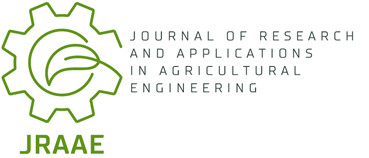Current issue
Online First
Archive
Instructions for Authors
Guide for Authors
Peer Review Policy
Research Ethics Policy
Ghostwriting and Guest Authorship
Copyright
Open Access Policy
Plagiarism
About the Journal
Aim and Scope
Scientific Board
Publisher
Editorial Board
Indexing in Databases
Personal Data Protection
Repository Policy
Contact
ORIGINAL PAPER
Analysis of qualitative properties of briquettes made from plant biomass with a hydraulic piston briquette machine
1
Uniwersytet Przyrodniczy w Lublinie, Katedra Maszynoznawstwa Rolniczego, ul. Głęboka 28, 20-612 Lublin, Poland
2
Uniwersytet Przyrodniczy w Lublinie, Katedra Maszyn Ogrodniczych i Leśnych, ul. Głęboka 28, 20-612 Lublin, Poland
Journal of Research and Applications in Agricultural Engineering 2016;61(2):65-69
KEYWORDS
ABSTRACT
In connection with the depletion of fossil fuel resources and negative impact of their combustion products on the environment, there is a need to search for renewable energy sources. Biomass of plant origin that can be used e.g. for the production of solid biofuels in the form of briquettes or pellets is one such source. The article presents an analysis of qualitative characteristics of briquettes made from the selected plant materials using a hydraulic piston briquette machine. The study used the following materials: wheat straw, rape straw and camomile waste. During the briquetting process the adopted moisture of the crushed material was: 10.0; 13.0 and 16.0%, while the operating pressure of the briquetting piston: 6.0; 8.0 and 10.0 MPa. During the study the following values were determined: particle size distribution, length and mass of the produced briquettes as well as their specific density and mechanical strength. Depending on the briquetted raw material and studied factors, the specific density of the pellets and their mechanical strength increased with the increasing moisture and briquette machine's pressure. There was a statistically significant effect of the raw materials moisture and briquetting pressure on the qualitative properties of briquettes under study.
REFERENCES (19)
1.
Adamczyk F., Frąckowiak P., Mielec K., Kośmicki Z.: Problematyka badawcza w procesie zagęszczania słomy przeznaczonej na opał. Journal of Research and Applications in Agricultural Engineering, 2005, 50(4), 5-8.
2.
Bielski S., Dubis B., Jankowski K.: Efektywność energetyczna produkcji i konwersji biomasy pszenżyta ozimego na biopaliwa. Przem. Chem., 2015, 94/10, 1798-1801.
3.
Dreszer K., Michałek R., Roszkowski A.: Energia odnawialna - możliwości jej pozyskiwania i wykorzystania w rolnictwie. Kraków: Wyd. PTIR, 2003. ISBN 83-9170-530-7.
5.
Grzybek A., Gradziuk P., Kowalczyk K.: Słoma - energetyczne paliwo. Warszawa: Wieś Jutra Sp. z o.o., 2001. ISBN 83-88368-19-2.
6.
Hebda T., Złobecki A.: Wpływ wilgotności słomy na trwałość kinetyczną brykietów. Inżynieria Rolnicza, 2011, 6(131), 45-52.
7.
Hejft R. Ciśnieniowa aglomeracja materiałów roślinnych. Radom: Wyd. ITE, 2002. ISBN 83-7204-251-9.
8.
Hejft R., Obidziński S.: Pressure agglomeration of plant materials - pelleting and briquetting (Part II). Journal of Research and Applications in Agricultural Engineering, 2015, 60(1), 19-22.
9.
Kulig R., Skonecki S., Gawłowski S., Zdybel A., Łysiak G.: Oddziaływanie ciśnienia na efektywność zagęszczania trocin wybranego drewna miękkiego. Acta Sci. Pol., Technica Agraria, 2013, 12(1-2), 31-40.
10.
Niedziółka I., Szpryngiel M., Kraszkiewicz A., Kachel-Jakubowska M.: Ocena wydajności brykietowania oraz jakości brykietów wytworzonych z wybranych surowców roślinnych. Inżynieria Rolnicza, 2011, 6(131), 149-155.
11.
Niedziółka I., Szymanek M.: An estimation of physical properties of briquettes produced from plant biomass. Teka Komisji Motoryzacji i Energetyki Rolnictwa, 2010, Vol. X, 301-307.
12.
PN-EN 15414-3:2011. Oznaczanie zawartości wilgoci metodą suszarkową - Część 3: Wilgoć w ogólnej próbce analitycznej.
13.
PN-EN 15149-2:2011. Biopaliwa stałe - Oznaczanie rozkładu wielkości ziaren - Część 2: Metoda przesiewania wibracyjnego.
14.
PN-EN 15210-2:2011. Biopaliwa stałe - Oznaczanie wytrzymałości mechanicznej brykietów i peletów. Część 2: Brykiety.
15.
Panwar V., Prasad B., Wasewar K.: Biomass residue briquetting and characterization. J. Energy Eng., 2011, 137/2, 108-114.
16.
Praca zbiorowa pod red. J. Frączka. Optymalizacja procesu produkcji paliw kompaktowanych wytwarzanych z roślin energetycznych. Kraków: Wyd. PTIR, 2010. ISBN 978-83-930818-0-6.
17.
Sharma M. K., Gohil P., Sharma N.: Biomass briquette production: a propagation of non-convention technology and future of pollution free thermal energy sources. American Journal of Engineering Research (AJER), 2015, 04/02, 44-50.
18.
Szyszlak-Bargłowicz J., Piekarski W.: Charakterystyka biomasy jako paliwa [W:] Jackowska I. (red.) Biomasa jako źródło energii. Warszawa: Wieś Jutra Sp. z o.o., 2009, 29-38.
19.
Zawiślak K.: Wpływ kształtu powierzchni rolek wytłaczających na trwałość granulatu. Inżynieria Rolnicza, 2006, 7(82), 475-483.
Share
RELATED ARTICLE
We process personal data collected when visiting the website. The function of obtaining information about users and their behavior is carried out by voluntarily entered information in forms and saving cookies in end devices. Data, including cookies, are used to provide services, improve the user experience and to analyze the traffic in accordance with the Privacy policy. Data are also collected and processed by Google Analytics tool (more).
You can change cookies settings in your browser. Restricted use of cookies in the browser configuration may affect some functionalities of the website.
You can change cookies settings in your browser. Restricted use of cookies in the browser configuration may affect some functionalities of the website.


